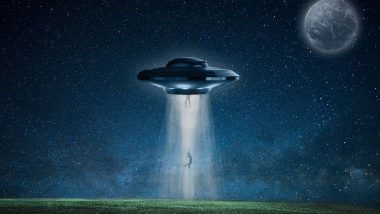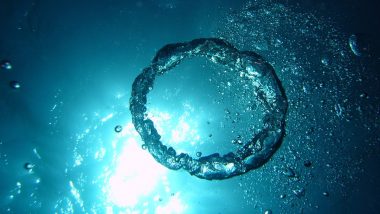Mumbai, June 28: Extensive research and investigations continue in the quest for UFO sightings and evidence of extraterrestrial activity as the alien theory continues to woo the fans. Renowned astrophysicist Avi Loeb, formerly the chairman of Harvard's Department of Astronomy, said strange debris found at the bottom of the ocean could be from a UFO crash. Loeb embarked on a high-profile $1.5 million expedition aimed at investigating whether the 2014 meteor crash in the southwestern Pacific Ocean could potentially be linked to UFO crash debris and possess extraterrestrial origins.
In their endeavour, Avi Loeb and his research team are meticulously scouring the Pacific Ocean floor for remnants of IM1, an interstellar meteor that detonated and plunged into the waters approximately 100 miles away from the shores of Papua New Guinea. With its staggering velocity of 130,000 MPH, this celestial body marks a rare occurrence as only the third documented interstellar object to have encountered our planet. 'UFO' Spotted in China Videos: World's First Manned Electric Flying Saucer Takes to the Skies Over Shenzhen During Test Flight, Footages Go Viral.
Reportedly, Loeb and his team of researchers discovered small metallic wires last week that Loeb terms as “anomalous compared to human-made alloys.” This week, the renowned astronomer reported in his journal that they had discovered 50 microscopic spherules so small they can only be viewed through a microscope. “We found a composition of mostly iron with some magnesium and titanium but no nickel. This composition is anomalous compared to human-made alloys, known asteroids and familiar astrophysical sources," Loeb wrote. UFO Sighting in US: Las Vegas Police Probe Multiple Unidentified Flying Objects Sightings in a Night.
According to Professor Loeb, the microscopic spherules were exclusively found along the trajectory traced by the meteor. Emphasising this, Loeb writes, “Finding more spherules will allow us to pinpoint the meteor's path and potentially seek a large object that may represent its core at the end of the path. If such an object is retrieved, its structure could inform us of its technological purpose and design." Loeb added that he and his team are now on their way back to IM1’s crash site in an attempt to retrieve as many spherules as possible. With a large enough sample, they can obtain a gamma-ray spectrum that will characterise its radioactive elements and potentially date the sample.
(The above story first appeared on LatestLY on Jun 28, 2023 08:26 PM IST. For more news and updates on politics, world, sports, entertainment and lifestyle, log on to our website latestly.com).













 Quickly
Quickly




















